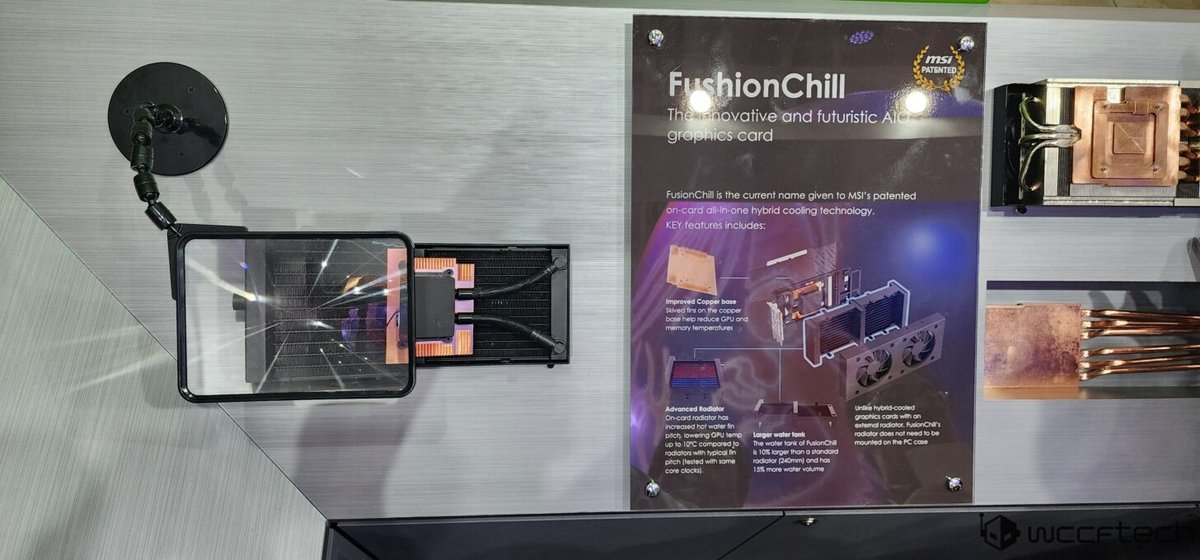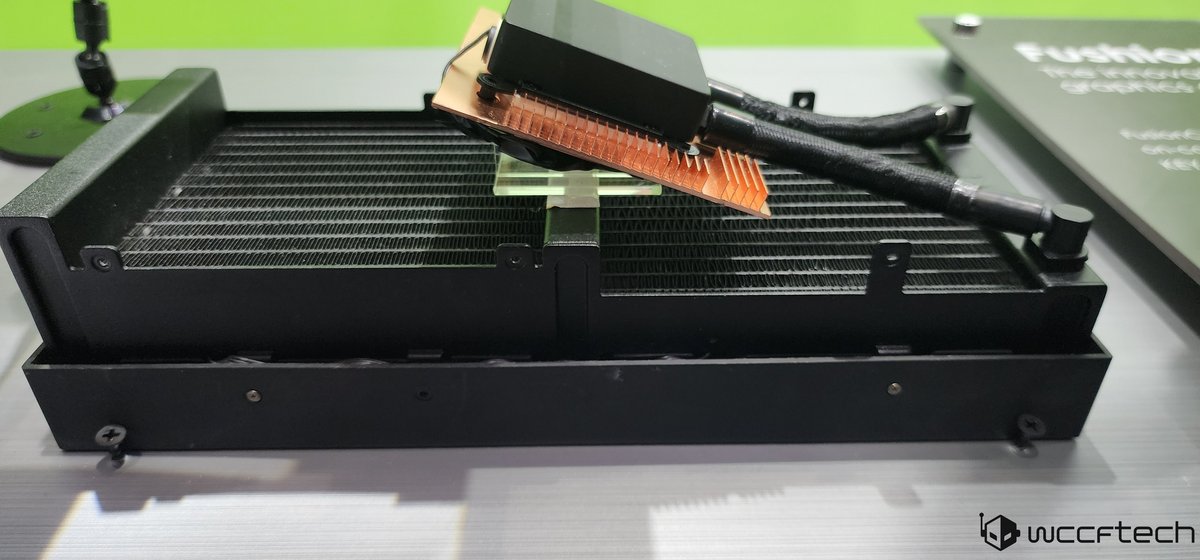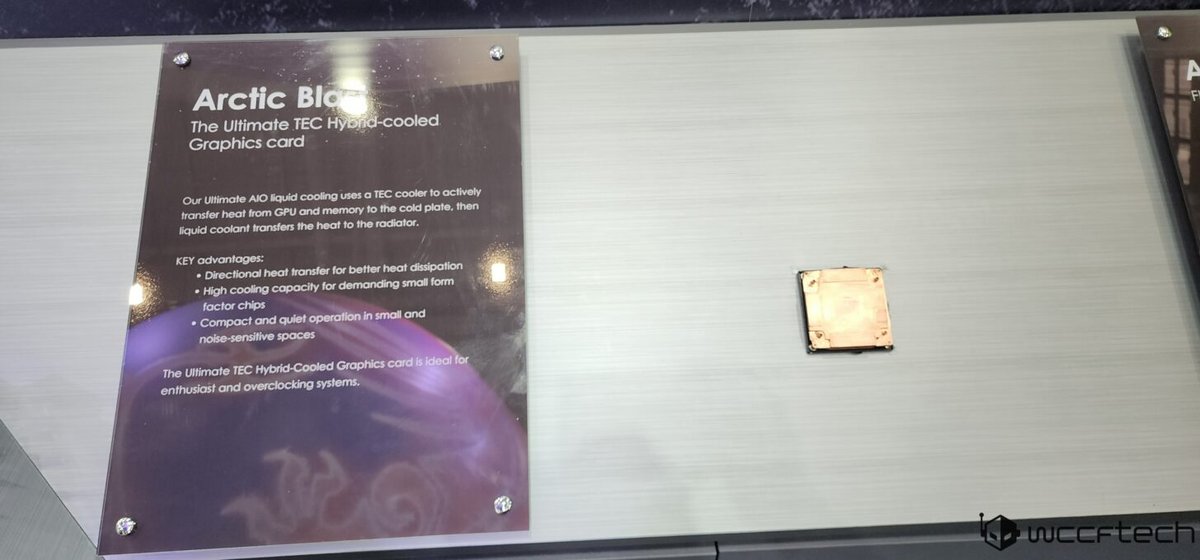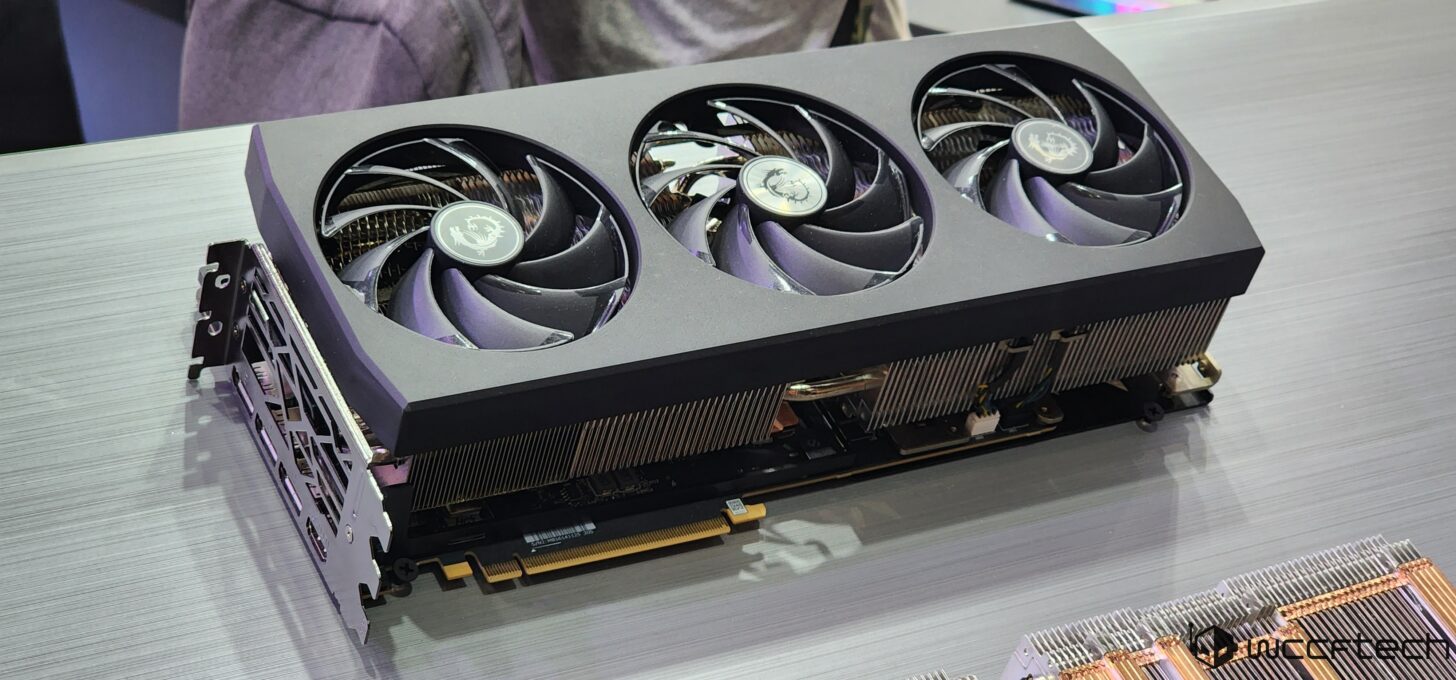No less than three types of cooling for the next generations of graphics cards were presented at Computex.
Year after year, the question of GPU cooling is becoming more and more complex. It is indeed a long time ago when the 3DFX accelerator was content with small passive heatsinks.
Bimetallic fins and heat pump
If Computex is an opportunity to present products whose distribution is imminent, the show is also a way to highlight the work carried out in-house and the trends of this or that manufacturer.
Thus, MSI took advantage of its stand in Taipei to illustrate three types of cooling solutions, as explained to us VideoCardz. These solutions target the graphics card market with an AiO cooler (All-in-One, integrating heatsink, pump and heatsink), a vapor chamber-based system and a heatsink with bimetallic fins.
These three solutions were notably illustrated with a demonstration graphics card that had everything from the GeForce RTX 4090 Suprim X. MSI did not specify things further, but failing to see an RTX 4090 adopt one of these systems, it is possible that an RTX 4090 Ti is used for the test.

A return of the Peltier effect?
For the time being, it has mainly been a question of discussing what MSI considers to be three options for the future of graphics card cooling, with the focus on future generations of GPUs that we already imagine to be a little more energy-intensive. and heaters than current cards.

The model based on bimetallic fins should make it possible to take advantage of a mix designed to increase the efficiency of dissipation in a given area. MSI talks about exploiting the conductivity differential between the two metals used for the occasion, copper and aluminum. In addition, MSI introduced the DynaVC, a technology that relies on a vapor chamber, which is connected to heat pipes that can be bent to avoid the need for soldering.

Finally, the third and last concept put forward by MSI is nothing but an AiO, but of course it is not an ordinary AiO. Called Arctic Blast, it uses thermoelectric cooling (Peltier effect plate) for a hybrid solution that MSI estimates, you can imagine, much more efficient than current techniques. The future will tell us which solution(s) the firm will set its sights on.
Sources: VideoCardz, Wccftech

8